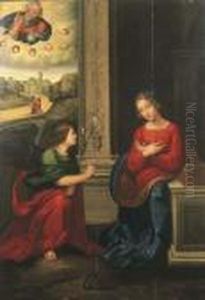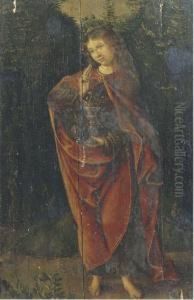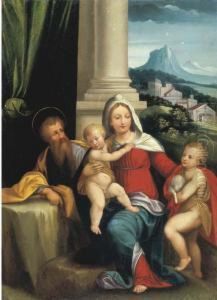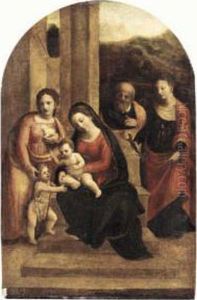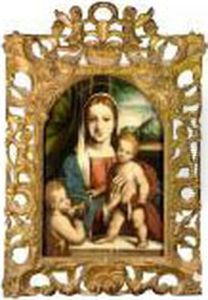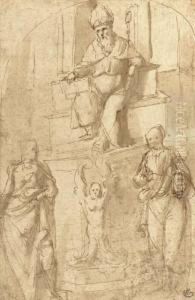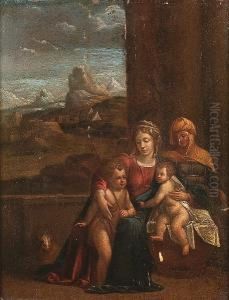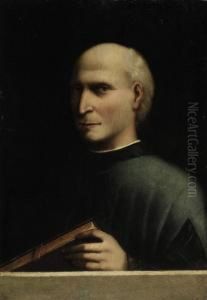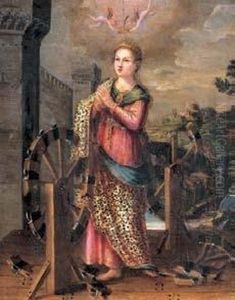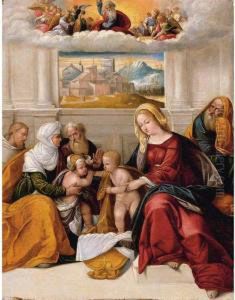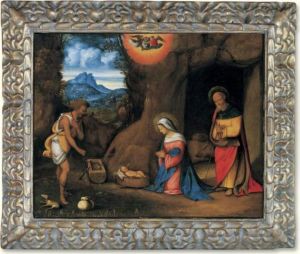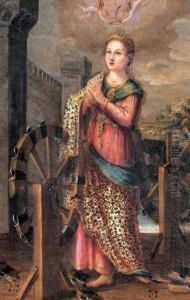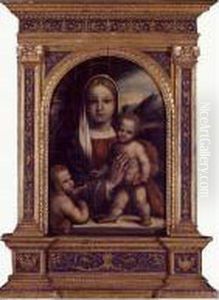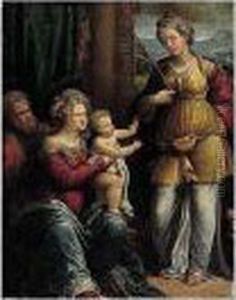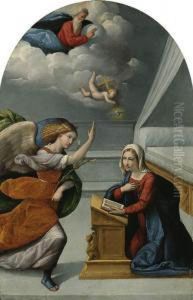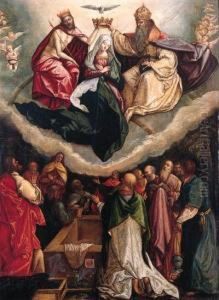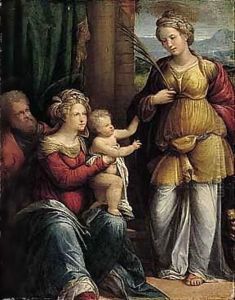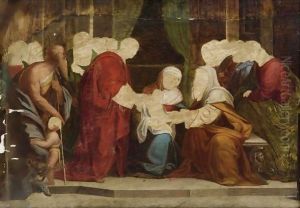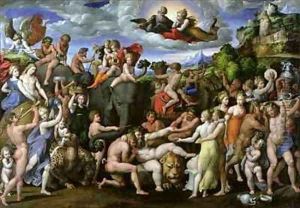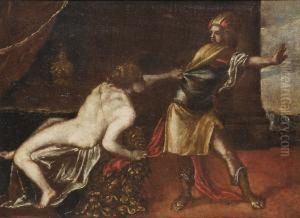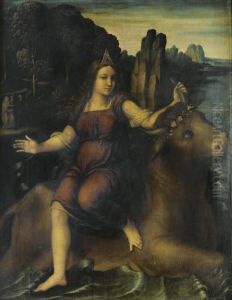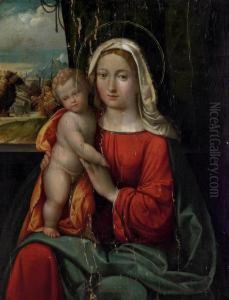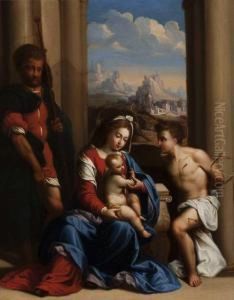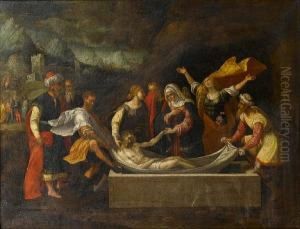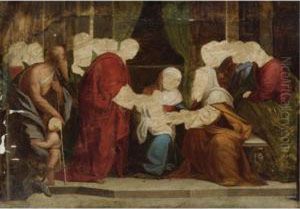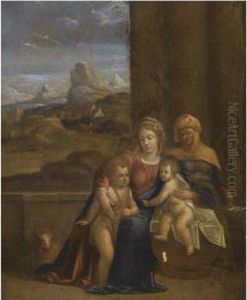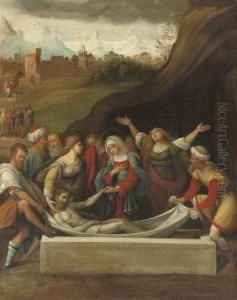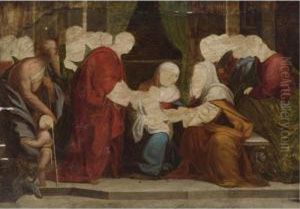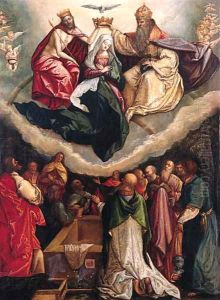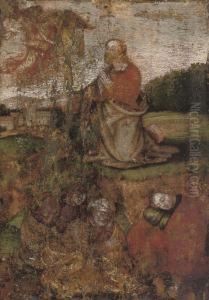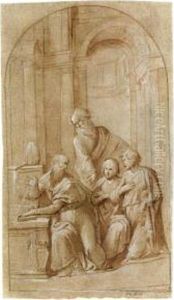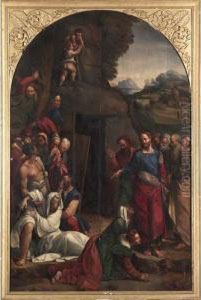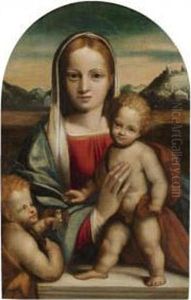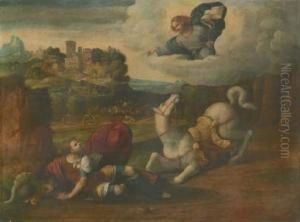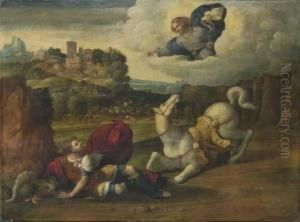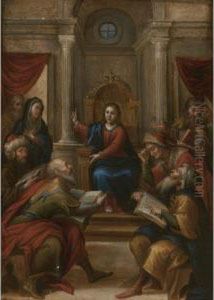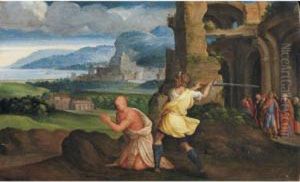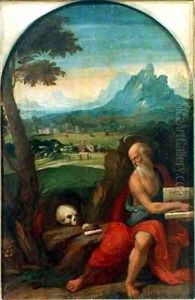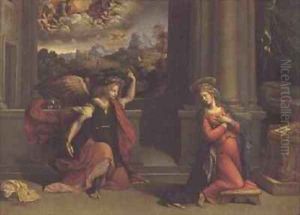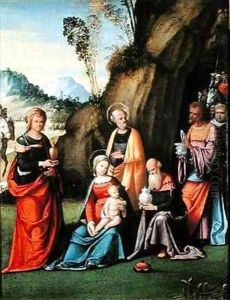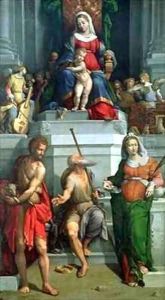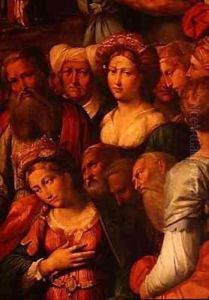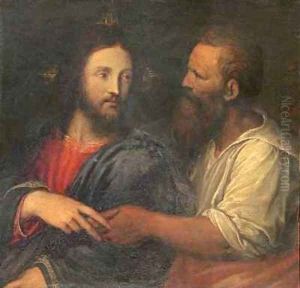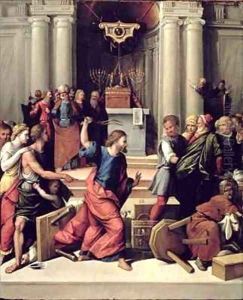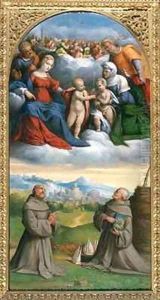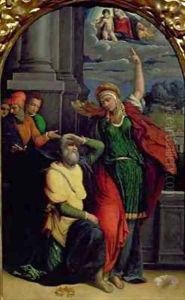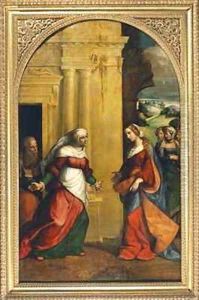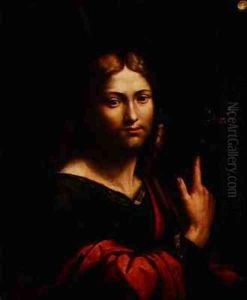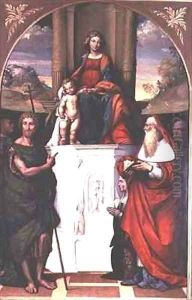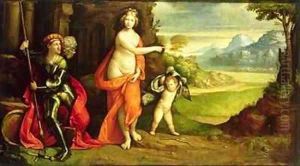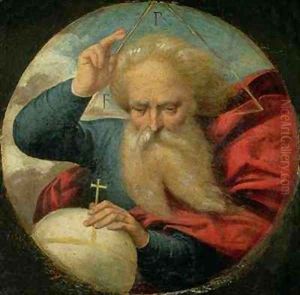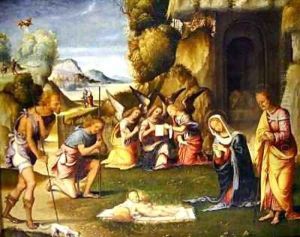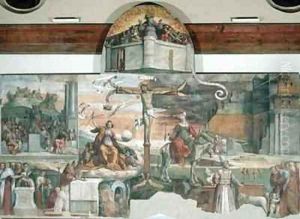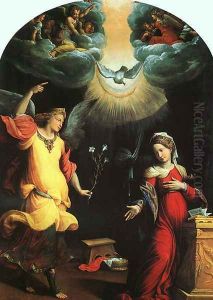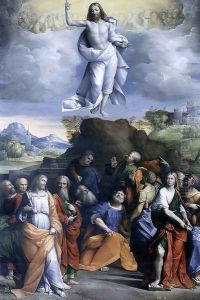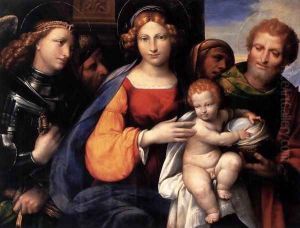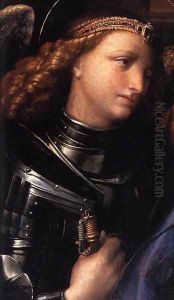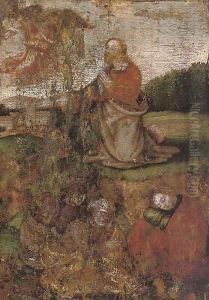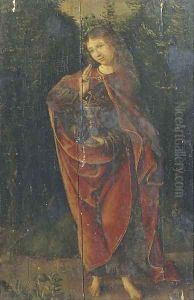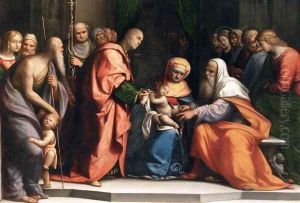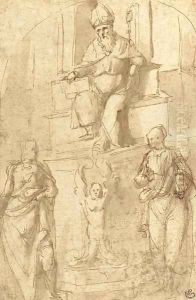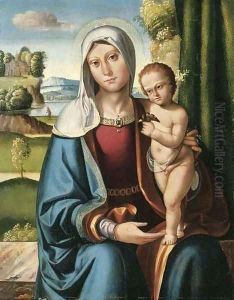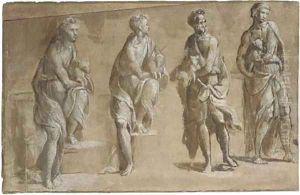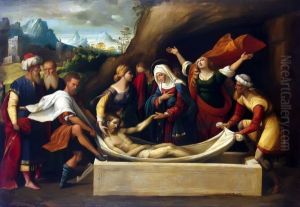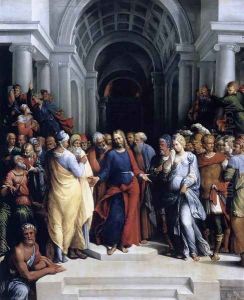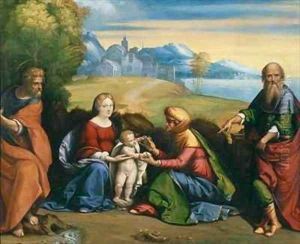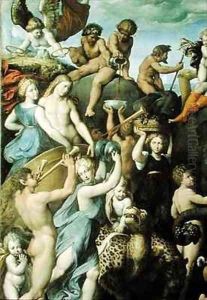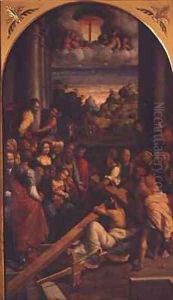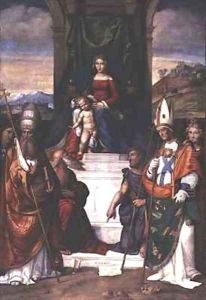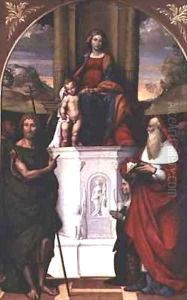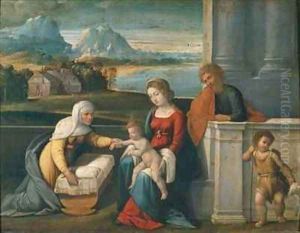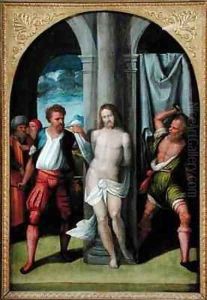Garofalo Paintings
Benvenuto Tisi (or Il Garofalo) was an Italian painter of the Renaissance, active in the region of Ferrara. Born in 1481 in Canaro near Ferrara, Italy, Garofalo is often considered one of the leading figures in the Ferrarese school of painting, which was marked by a blend of Northern European and local Italian influences. Garofalo's nickname, which became more famous than his real name, is derived from the Italian word for the herb 'clove,' which is 'garofano.' It is said that he often included a clove in his paintings, which became a sort of signature.
Garofalo was an apprentice to Domenico Panetti and later went to Rome around 1500 to study under Lorenzo Costa. During his time in Rome, he was greatly influenced by the works of Raphael and Michelangelo, which is evident in his use of color and compositional techniques. Upon returning to Ferrara, he incorporated these influences into his own style, which was characterized by graceful figures and a refined use of color.
Throughout his career, Garofalo was patronized by the d'Este family, the ruling house of Ferrara. He was involved in various projects, including frescoes for churches and decorative schemes for ducal palaces. His religious works are particularly noted for their devotional intensity and attention to detail. Garofalo was also known for his altarpieces and mythological scenes, which often featured lush landscapes and intricate architectural designs.
Despite his success, not much is known about Garofalo's personal life. He never married and had no known children. His works, however, have left a lasting legacy in the history of Italian Renaissance art. Garofalo's paintings are characterized by their clarity, controlled use of perspective, and the serene mood they evoke. Over time, his style became more Mannerist, reflecting the changing tastes of the period.
Garofalo continued to paint until his old age, despite suffering from blindness during the last years of his life. He died in Ferrara in 1559. Today, his works can be found in major museums around the world, including the National Gallery in London, the Louvre in Paris, and the Galleria degli Uffizi in Florence. Garofalo's contributions to the Ferrarese school are still celebrated, and his influence can be seen in the works of later artists from the region.
